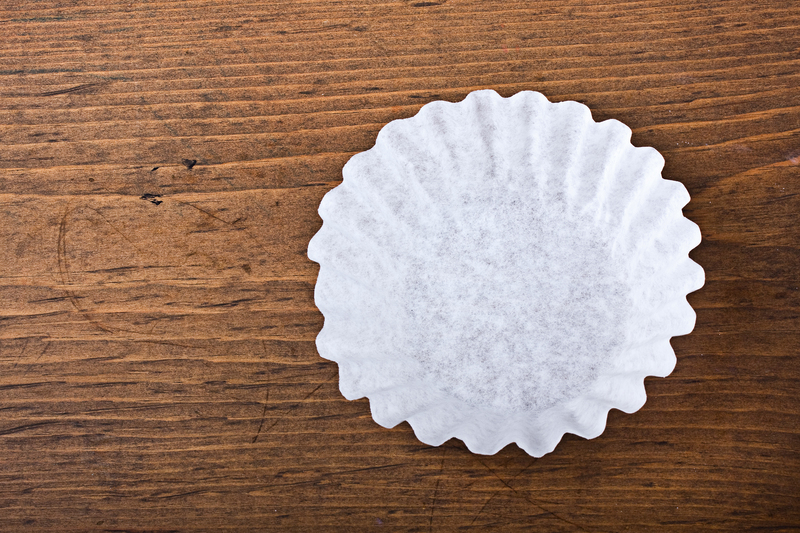Stovetop Rescue: Get Rid of Burnt-on Residue with Our Expert Tips
Posted on 22/05/2025
Stovetop Rescue: Get Rid of Burnt-on Residue with Our Expert Tips
If you've ever experienced the frustration of burnt-on residue clinging to your stovetop, you're not alone. Whether it's from years of daily cooking or a recent culinary mishap, those stubborn stains can seem impossible to tackle. Luckily, our expert stovetop cleaning advice is here to help you regain your appliance's shine without any stress. In this comprehensive guide, you'll discover practical, effective, and safe ways to remove burnt-on residue from your stovetop, plus valuable tips for ongoing maintenance.

Understanding Burnt-on Residue: Why Is It So Stubborn?
Before diving into how to clean burnt-on residue from your stovetop, it's essential to understand why these stains are so persistent. Burnt-on residue usually consists of:
- Sugars and starches that have caramelized under high heat
- Greases that have carbonized into stubborn deposits
- Spilled sauces or boil-overs left unaddressed
The Risks of Leaving Burnt Stovetops Untreated
Letting burnt-on residue linger isn't merely a cosmetic issue. Here's why you should tackle it as soon as possible:
- Inefficiency: Burnt material can interfere with heat distribution, affecting your cooking results.
- Health risks: Old food and grease can harbor bacteria and emit unpleasant fumes.
- Appliance lifespan: Over time, the buildup can damage burners, igniters, or electric coils.
- Difficult removal: The longer residue stays, the harder it will be to eliminate.
Pre-Cleaning Checklist: What You'll Need
Preparation is crucial for a successful stovetop cleaning session. Here's a list of essential tools and ingredients that will make burnt-on residue removal much easier:
- Non-abrasive scrubbing pads or sponges
- Microfiber cloths for polishing
- Baking soda (a natural, mild abrasive)
- White vinegar
- Dish soap
- Plastic or silicone scraper (never metal!)
- Old toothbrush (for crevices)
- Optional: Commercial stovetop cleaner
- Rubber gloves
Step-by-Step Guide to Removing Burnt-on Residue from Your Stovetop
1. Assess the Different Types of Stovetops
Stovetops come in various materials, such as:
- Glass and ceramic
- Stainless steel
- Enamel-coated
- Cast iron (grates and elements)
2. Remove Loose Debris
Sweep away crumbs and loose charred bits with a damp cloth. This prevents surface scratching during deeper cleaning.
3. Loosen Burnt-on Residue with Soaking
Pour a mixture of hot water and a few drops of dish soap onto the burnt area. Allow it to sit for 10-15 minutes. For tougher stains, lay a damp cloth soaked in hot soapy water directly over the residue.
Pro Tip: For glass stovetops, avoid allowing standing water to seep into control elements.
4. Use Baking Soda for Stovetop Residue
Baking soda is a miracle worker for removing burnt-on residue from stovetops of all types. Sprinkle it liberally over stubborn spots, then spray or sprinkle vinegar over the soda. The mixture will fizzle, helping to dislodge the grime. Let it sit for 10 minutes.
- For enamel and stainless steel: Use a non-abrasive sponge to scrub in a circular motion.
- For glass and ceramic: Wipe gently with a soft cloth or sponge to avoid micro-scratches.
5. Scrape Off Remaining Residue
Use a plastic or silicone scraper to gently lift softened burnt bits. If you hit resistance, don't force it--apply more baking soda-vinegar paste and wait another 5-10 minutes. Never use a knife or razor on glass stovetops unless it's a tool specifically designed for that purpose.
6. Clean Around Burners and Controls
Burnt-on residue often accumulates near burners and controls. Use an old toothbrush dipped in soapy water or vinegar to scrub these tricky areas.
7. Wipe Down and Polish
Wipe the entire surface with a clean, damp cloth to remove any residue or cleaning agents. Dry with a microfiber towel for a streak-free finish.
How to Tackle Stubborn or Old Burnt-on Gunk
Sometimes, despite your best efforts, burnt-on residue refuses to budge. Here are advanced strategies for extra-tough messes:
- Poultice Paste: Mix baking soda and a little water to make a paste. Apply thickly, cover with plastic wrap, and leave for up to 2 hours before scrubbing off.
- Commercial Cleaners: Look for reputable, non-abrasive stovetop cleaners (such as Weiman or Bar Keeper's Friend) for a chemical boost. Always follow manufacturer instructions.
- Steam Treatment: Heat a damp towel in the microwave and spread it over the burnt region. Let the steam work for 10-15 minutes to soften caked-on debris.
- Razor Scraper (For Glass Only): Use a special glass stovetop razor for truly hardened residue, holding the blade flat and working gently to avoid scratching.
Prevent Future Burnt-on Stovetop Messes
Keeping your stovetop sparkling is easier than repeated deep cleans. Here's how to prevent burnt-on residue in the first place:
- Wipe spills immediately: Address sauce or food splatters as soon as it's safe, before they harden.
- Use splatter guards: Prevent oil and sauce from reaching burners and surfaces.
- Watch your heat: Don't cook on high unless necessary; lower temperatures reduce scorching and boil-overs.
- Weekly clean: Do a full surface wipe-down at least once a week.
- Use proper cookware: Make sure pots and pans fit burners to prevent overflow.
- Deep clean monthly: Tackle burner grates, knobs, and under-layers every month to stay ahead of grime.
Caring for Different Stovetop Types
Glass and Ceramic Cooktops
- Never use scouring pads or powders.
- Specialized glass stovetop cleaners are best.
- Remove rings and jewelry while cleaning to prevent scratching.
Stainless Steel Stovetops
- Always scrub with the grain of the metal to prevent marks.
- Use baking soda for residue, but rinse well to avoid dulling.
- Polish with a small amount of olive oil for extra shine.
Enamel-Coated Stovetops
- Avoid abrasive tools, which can chip the enamel finish.
- Soak and gently scrub with dish soap and water.
Cast Iron Grates & Elements
- Soak removable grates in hot, soapy water before scrubbing.
- Use a paste of salt and water for heavy carbonization.
- Dry thoroughly to prevent rusting.
Safe Cleaning Practices for Stovetop Burnt Residue
Keep yourself and your appliance protected by following these golden rules:
- Stay away from bleach or ammonia on colored surfaces.
- Always unplug electric stoves before cleaning coil elements.
- Ventilate your kitchen if using strong chemical cleaners.
- Wear rubber gloves to prevent skin irritation.
Stovetop Cleaning Myths: What Not To Do
There are plenty of old wives' tales about removing stove stains. Here are some bogus methods to avoid:
- Metal scrapers on glass or ceramic (leaves scratches and ruins your cooktop)
- Vinegar on aluminum (causes pitting and color change)
- Lemon juice--while mildly acidic, it's less effective than vinegar and may leave sticky residues
- Bleach--corrosive and potentially hazardous
- Letting water pool on electric ranges (can cause shorts or rusting)
Frequently Asked Questions About Burnt-on Stovetop Residue
How often should I clean my stovetop?
Ideally, wipe up after every use and do a more thorough clean once a week to prevent burnt-on buildup.
Is it safe to use oven cleaner on my stovetop?
Generally, oven cleaner is too harsh for most stovetops, especially glass and enamel. Stick to gentle methods or cleaners specifically labeled for stovetops.
What if the burnt stains just won't come off?
Try repeating the baking soda and vinegar process, or use a commercial glass-top scraper. If problems persist, consult your appliance's manual or a professional cleaning service.
Will these tips work on an induction stove?
Yes! Induction cooktops are made of glass-ceramic. The same gentle cleaning techniques apply.
Can I use hydrogen peroxide as a cleaner?
Hydrogen peroxide is safe for most stovetop surfaces but less effective alone. It can be useful in combination with baking soda for boosted stain-fighting power.

Final Words: Enjoy a Spotless, Efficient Stovetop
Tackling burnt-on residue on your stovetop doesn't have to be a never-ending battle. With the right supplies, a little patience, and our expert tips, you can restore your cooktop's shine and keep it looking like new. Remember, regular cleaning is key to preventing the type of burnt-on messes that require deep scrubbing. Armed with these techniques and a proactive mindset, you'll be ready to handle kitchen mishaps--big or small--every time.
Share Your Own Stovetop Rescue Stories
Have you discovered a unique tip for getting rid of burnt-on residue from your stove? Leave a comment below and help other readers keep their kitchens sparkling clean!




